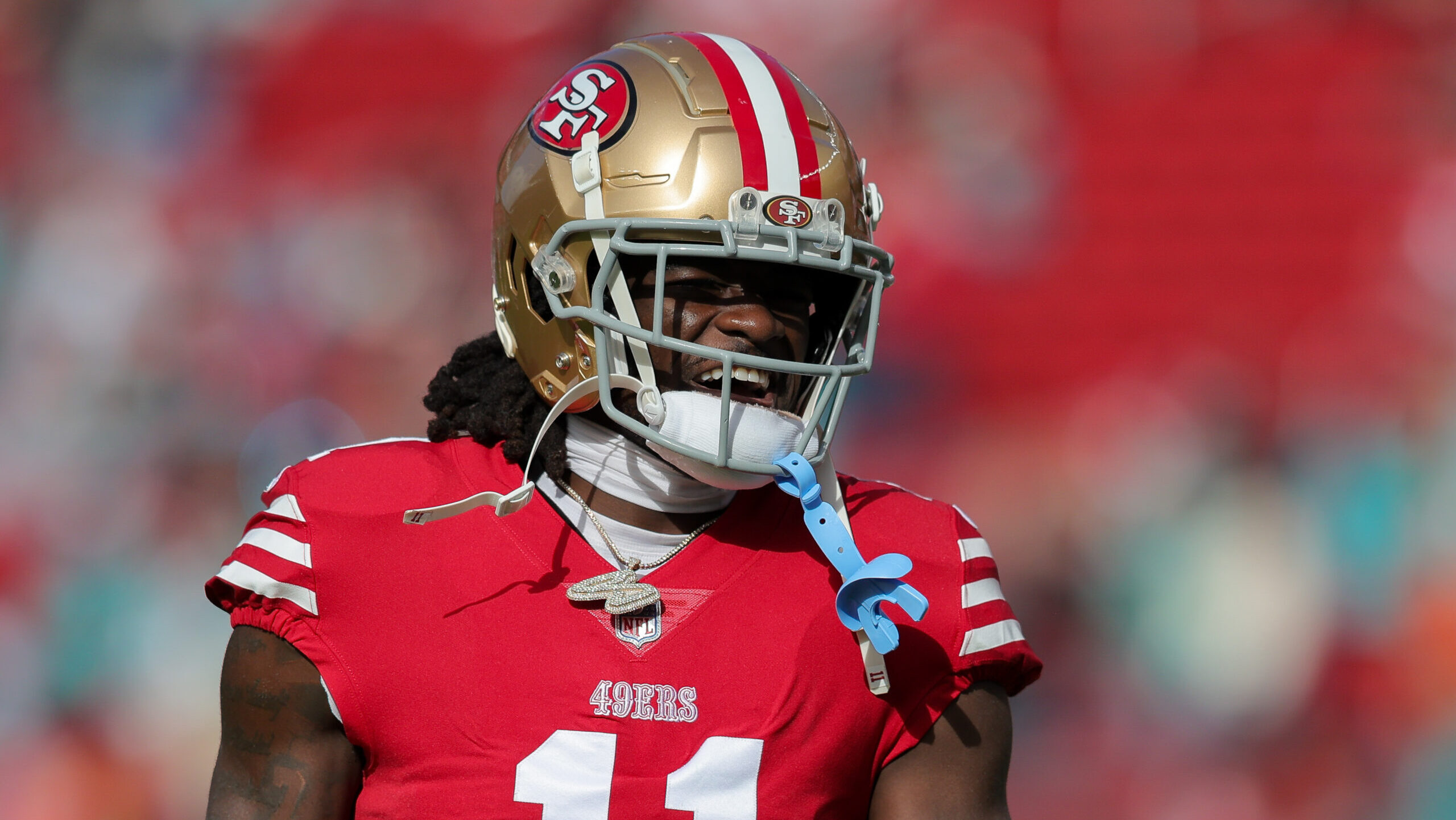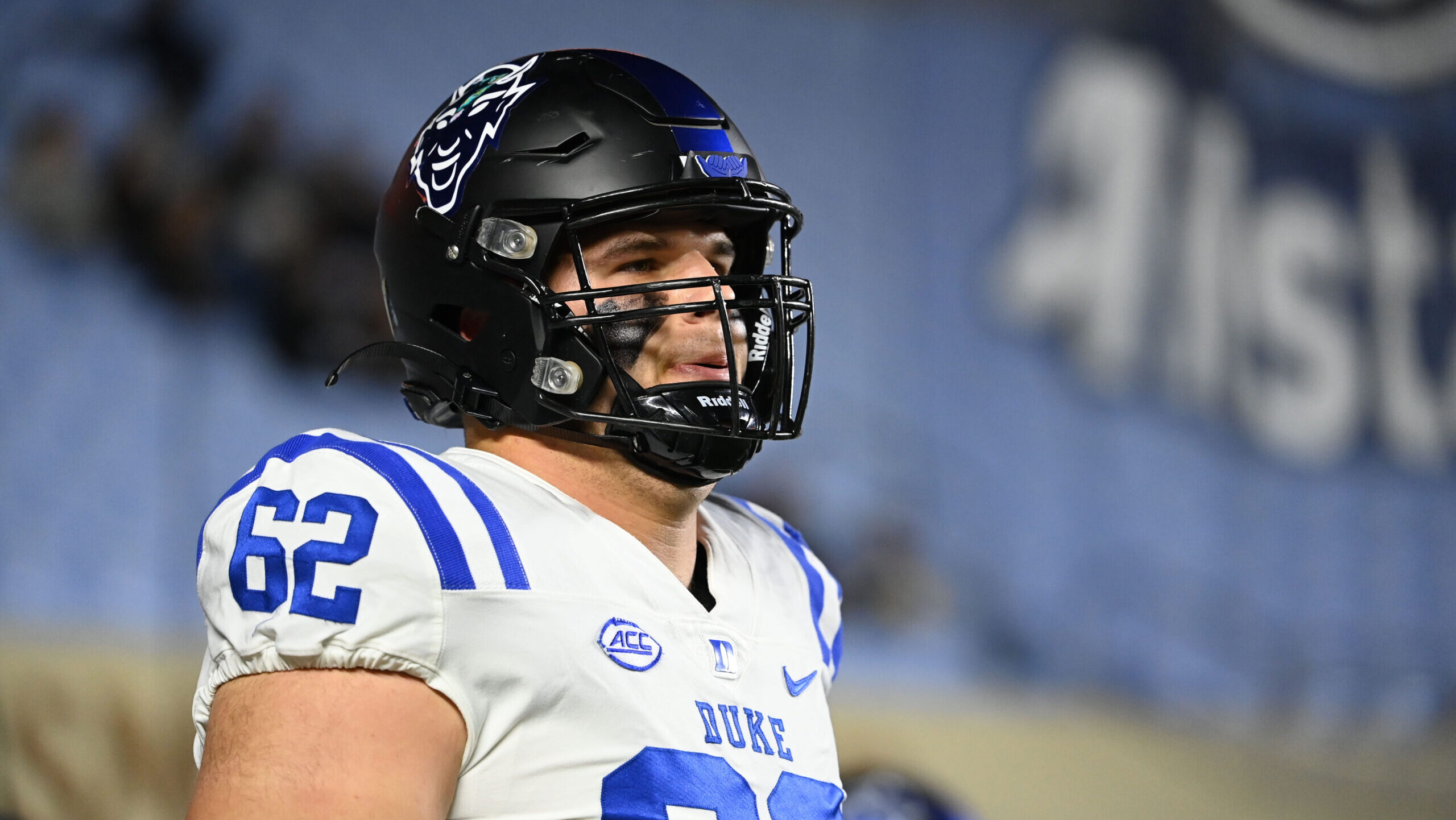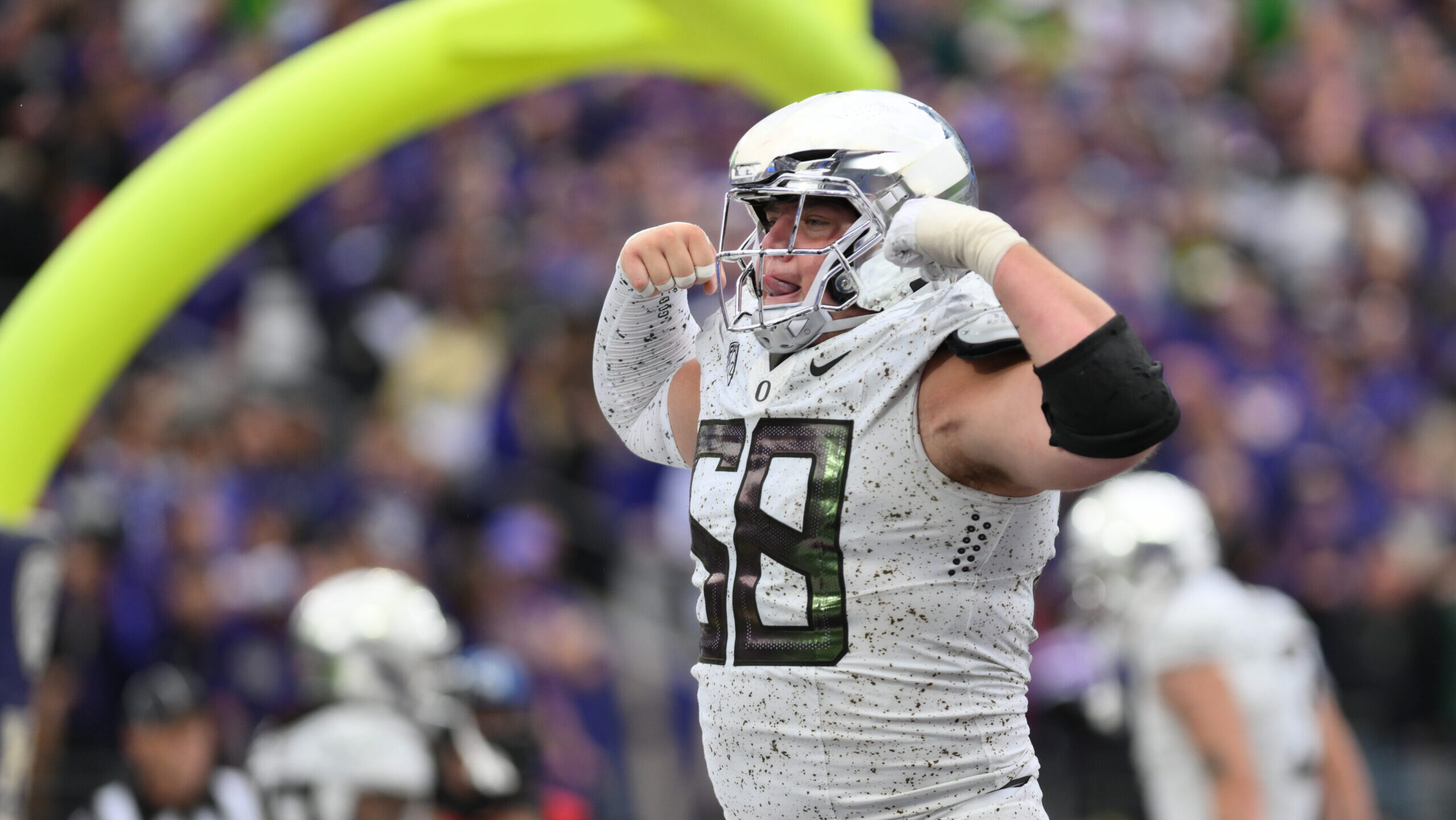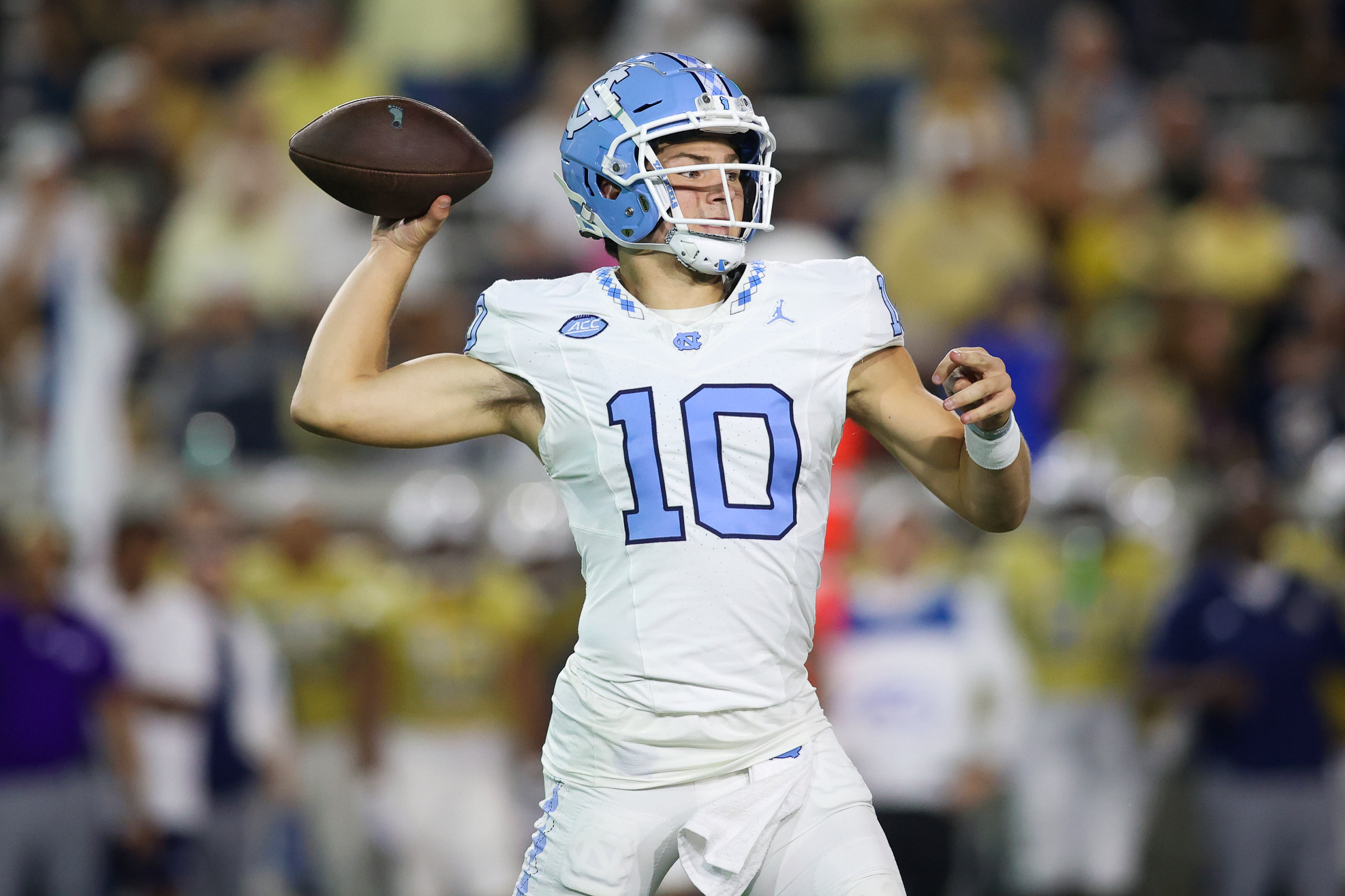Analysis
12/1/22
9 min read
Thursday Dilemma: Limited Prep, Recovery Can Compromise Competitiveness
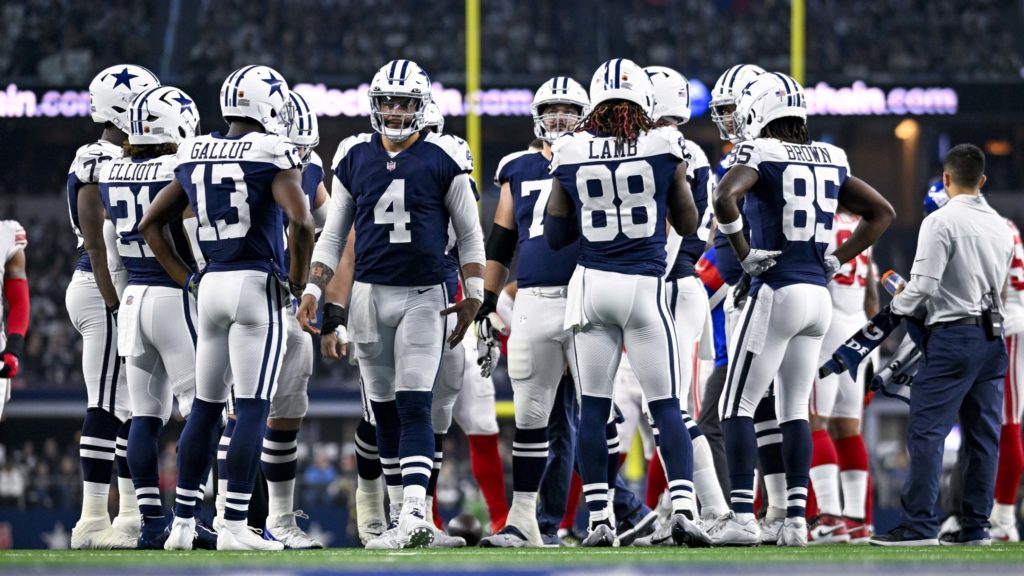
There are two ways to look at Thursday games in the NFL.
On the positive side, you have the rich tradition of those played on Thanksgiving. This year’s triple-header brought plenty of excitement and competitiveness. As usual, it also attracted an overwhelming number of eyeballs. Short of the Super Bowl and playoffs, Thanksgiving Day delivers the NFL’s biggest viewing audience. The Giants-Cowboys game in the 4 p.m. window drew an all-time record 42 million viewers. The early Bills-Lions game was the most-watched game in history in that Thanksgiving window.
However, when it comes to the regularly scheduled games each Thursday night, there are some serious football concerns.
TNF, Thanksgiving Games History
First, some background. Years ago, Commissioner Paul Tagliabue explained that compared to other sports, the NFL was fortunate in having two unique situations that worked very much in its favor. First, it’s geometry. All 22 players fit perfectly on a rectangular television screen at the start of every play. Second, the NFL peaks with its most important games when winter weather arrives for a large swath of the population, thus encouraging them to stay inside and turn on the TV.
Thanksgiving Day begins the stretch run for the Super Bowl, and the league strives to create meaningful matchups coupled with college-like tradition on that day. The Lions’ Thanksgiving tradition began in 1934. Under the direction of Hall of Fame executive Tex Schramm, the Cowboys instituted their Thanksgiving Day game in 1966. In those days, most NFL teams did not want to play on a short week or disrupt the holiday for their fans. Only the Lions and Cowboys had interest. Over time, other clubs wanted to join the party. Lamar Hunt, the late owner of the Chiefs, was a huge proponent of Thanksgiving Day games as the AFL, which was his brainchild, played on that day.
There was a movement within the NFL to rotate venues on Thanksgiving Day. After checking with the appropriate committees, Commissioner Tagliabue decided that the league would reward the foresight and perseverance of the Lions and Cowboys by keeping them in their traditional Turkey Day slots. In addition, the league followed Lamar Hunt’s lead and added a third evening game in prime time that would rotate the host team annually. John Madden added to the tradition and fun by awarding a turkey leg to the most outstanding player of the game he broadcast.
Other sports have ceded Thanksgiving Day to the NFL. There’s only one college game broadcast that day. FIFA is holding its premier event, the World Cup, which began in Thanksgiving week, but doesn’t dare put the U.S. team on TV against the NFL. They scheduled the U.S. versus England game on Black Friday. The NBA tries to manufacture excitement during its late winter “dog days” by staging a meaningless tournament. Thanksgiving football, from backyard family games to high school rivalries dating back more than 75 years to the NFL, is a uniquely American tradition.
There’s a significant difference in the audience drawn to Thursday games played on Thanksgiving and those built into the weekly schedule. Players know that the rest of the league is watching on Thanksgiving, along with all their family and friends. They’re excited to play on Thanksgiving Day in front of the entire country, as opposed to a much smaller audience on the streaming version of Thursday Night Football. They simply bring more “juice” than on any other Thursday night.
How Teams Prepare for Thursday Games
Playing two NFL games in five games is incredibly difficult and debilitating. The spin that “players really like” the mini-bye they have after two games is malarkey. Of course, they do because it’s a great deal better than the alternative.
Preparation is very different from a normal week. A Monday night game to a Sunday game is a short week. Sunday to Thursday is an impossible week. Before a Thursday game, teams with which I have been associated didn’t practice in the traditional sense at all. There is no off day for the players. They come in on Monday for treatment and lengthy meetings to introduce the scouting report and game plan.
That is very much out of the ordinary since Monday would typically be a very short day with only treatment, and Tuesday would be a day off. In the case of a Thursday game, Tuesday is another lengthy day, filled with meetings, film study and walk-through followed by treatment. In a typical week, you would practice the game plan with a walk-through and on-field work in segments and detail. First and second down on Wednesday. Third down and blitz on Thursday. Short-yardage, goal-line and two-minute on Friday. Each of those three days would focus on different facets of special teams.
Thursday games force teams to try to shove three days of game-planning, installation and practice into two while not stressing the players physically in any way. Game plans are typically as simple as possible because of the severely limited practice repetitions. Teams for which I worked, with one exception, have kept physical preparation to a minimum and game plans as basic as possible in order to fall back on fundamental plays and schemes that we practiced since minicamp.
The lone exception was with Coach Marv Levy in Kansas City. Our Chiefs were scheduled to play at Detroit on Thanksgiving Day. Going against his long-standing philosophy, Marv practiced his team on Monday and Tuesday. Wednesday is a lost day for the visiting team as it has to travel; you’re limited to meetings. As you might imagine, the Chiefs laid an egg. From that day on, Coach Levy echoed the great Oklahoma coach, Bud Wilkinson, to the effect that if given a choice, he would rather have an undertrained team than an overtrained one. It served us well throughout our time in Kansas City and subsequently in Buffalo. Tony Dungy followed the same approach when we were in Indianapolis.
Why Thursday Games Create Disadvantages
The visiting team is at a decided disadvantage on Thursday night after it has played on Sunday. Because of travel, in a real sense it has had one fewer day of preparation than the opponent. These circumstances put a team like New England in a difficult situation. The Patriots rely on meticulous mental and physical preparation, and an opponent-centric game plan that changes markedly from week to week.
With a Thursday game, air travel does not help injured players because altitude does nothing to speed rehabilitation and can likely worsen the situation. A visiting team player with a significant injury incurred the previous Sunday is not likely to even be available the following Thursday. On the other hand, the home team player, with similar injury status, gets an additional day of complete rest and rehab, thereby increasing his chances of being available. Any player concussed the previous Sunday is highly likely to be out the following Thursday, whereas he has a chance to be cleared for a Sunday game.
As a league, we have always tried to create the proverbial level playing field for both teams. That is not the case on Thursday night. Coach Vince Lombardi, preaching about top-flight conditioning to his Green Bay champions, famously said, “Fatigue makes cowards of us all.” There are no cowards in the NFL, but his point was that a fatigued player lacks physical, mental and emotional acuity, which leads to mistakes, potential injury and, ultimately, losses.
The games on Thanksgiving Day have the players sufficiently fired up to keep them playing hard as long as the outcome is in question. Even with that, there were plenty of mental errors, drops, penalties and missed tackles, all of which are signs of fatigue. This is even more pronounced on the “normal” Thursday night games. The television announcers have, from time to time, complained about the quality of play on Thursday night. This is not the players’ nor the coaches’ fault. It is the residue of the abbreviated time between games.
I’m not against Thursday Night Football. I’m just not in favor of anyone playing two NFL games in five days.
How to Solve the Problem
There is a solution, which we’ll look at it from two perspectives. The overarching one would be to give a bye to each team scheduled to play on a Thursday night the Sunday prior to that game. This would give every team the best chance to prepare to put the most competitive team possible on the field.
In a one-bye schedule format, this would likely limit the total number of games that could be played on Thursday night. You would have to remove the 10 teams that play overseas from Thursday night because they have the option of taking a bye following their trip. At the very least, since Thanksgiving Day is such an important NFL viewing day, it’s in everyone’s best interest to give a bye to the six teams scheduled to play on Thanksgiving the previous Sunday. That would likely prompt a pushback, though, for being somewhat competitively unfair.
Many times, during Competition Committee meetings, and during COVID discussions, the use of a second bye was addressed. That would extend the regular season to 17 games in 19 weeks. The second bye for every team would solve the Thursday night problem completely. That may be something to consider in the future.
As told to Vic Carucci
WATCH: Ed Reed's 'Most Dominant' Winner for November


